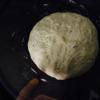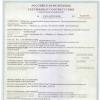Heparin interaction. Heparin: instructions for use. Ointment Heparin, instructions for use
General characteristics. Compound:
Active substance: 1 ml solution for injection contains 5000 units of heparin.
Pharmacological properties:
Pharmacodynamics. Heparin is a direct acting anticoagulant. It binds to antithrombin III, causes conformational changes in its molecule and accelerates the complexing of antithrombin III with serine proteases of the coagulation system; as a result, thrombin, the enzymatic activity of factors IX, X, XI, XII, plasmin and kallikrein are blocked. Heparin has no thrombolytic effect. The introduction of the drug into the blood in small doses is accompanied by a slight and intermittent increase in the fibrinolytic activity of the blood; large doses of heparin cause, as a rule, inhibition of fibrinolysis. Heparin reduces blood viscosity, prevents the development of stasis. Heparin is able to sorb on the surface of endothelial membranes and blood cells, increasing their negative charge, which prevents adhesion and aggregation of platelets, erythrocytes, and leukocytes. Heparin molecules, which have a low affinity for antithrombin III, cause inhibition of smooth muscle hyperplasia, and also inhibit the activation of lipoprotein lipase, thereby preventing the development of atherosclerosis. Heparin has an anti-allergic effect: it binds some components of the complement system, lowering its activity, prevents the cooperation of lymphocytes and the formation of immunoglobulins, binds histamine, serotonin. Inhibits the activity of hyaluronidase. It has a weak vasodilating effect.
Heparin acts quickly, but relatively briefly. With intravenous administration, blood coagulation slows down almost immediately, with intramuscular injection - after 15-30 minutes, with subcutaneous administration - after 40-60 minutes, after inhalation, the maximum effect is observed after a day; the duration of the anticoagulant effect, respectively, is 4-5 hours, 6 hours, 8 hours, 1-2 weeks, therapeutic effect(prevention of thrombosis) lasts much longer. Deficiency of antithrombin II I in plasma or at the site of thrombosis may limit the antithrombotic effect of heparin.
Pharmacokinetics. With subcutaneous administration, bioavailability is low, Cmax is achieved after 2-4 hours; T1 / 2 is 1 - 2 hours. In plasma, heparin is mainly in a protein-bound state; intensively captured by endothelial cells of the mononuclear-macrophage system, concentrated in the liver and spleen; when administered by inhalation, it is absorbed by alveolar macrophages, the endothelium of capillaries, large blood and lymphatic vessels. It undergoes desulfation under the influence of N-desulfamidase and platelet heparinase. Desulfated molecules under the influence of kidney endoglycosidase are converted into low molecular weight fragments. It is excreted by the kidneys in the form of metabolites, and only with the introduction of high doses is it possible to excrete unchanged. Heparin does not cross the placenta well due to its high molecular weight. Not excreted in breast milk.
Indications for use:
Dosage and administration:
Heparin is administered intravenously or intramuscularly (every 4 hours), subcutaneously (every 8-12 hours) and as an intra-arterial infusion, as well as by electrophoresis. In acute myocardial infarction on the first day, the first dose (10,000-15,000 units) is administered intravenously, then fractional intravenous or intramuscular administration of the drug is continued at a dose of 40,000 units per day, so that the blood clotting time is 2.5-3 times higher than normal quantities. Starting from the 2nd day, the daily dose is 600 IU/kg of the patient's weight (30,000-60,000 IU), so that the blood clotting time is 1.5-2 times higher than normal. Treatment with heparin is continued for 4-8 days. 1-2 days before the abolition of heparin, the daily dose is gradually reduced (daily by 5000-2500 units for each injection without increasing the intervals between them) until the drug is completely discontinued, after which treatment is carried out only with indirect anticoagulants (neodicoumarin, phenylin, etc.), which are prescribed from 3-4 days of treatment.
When using heparin in the complex conservative therapy acute venous or arterial obstruction begins with a continuous intravenous drip infusion of the drug for 3-5 days. The daily dose of heparin (400-450 IU / kg) is diluted in 1200 ml of isotonic sodium chloride solution or Ringer-Locke solution and poured at a rate of 20 drops per minute. Then heparin is administered fractionally at a dose of 600 U/kg per day (100 U/kg per injection). If intravenous administration of heparin is not possible, it is used intramuscularly or subcutaneously at a dose of 600 IU/kg per day. Heparin therapy is continued for 14-16 days. For 3-4 days before heparin withdrawal, the daily dose is reduced daily by 2500-1250 units for each injection without increasing the intervals between them. After discontinuation of the drug, treatment is carried out with indirect anticoagulants, which are prescribed one day before the first dose reduction of heparin.
At surgical treatment of these diseases during surgery immediately before thrombectomy from the main veins or immediately after embolthrombectomy from the arteries, heparin is administered at a dose of 100 IU/kg intravenously or intraarterially. Then, during the first 3-5 days of the postoperative period, heparin is injected intravenously at a rate of 20 drops per minute regionally into the vein from which the thrombus was removed, at a dose of 200-250 U / kg per day or intravenously into the general bloodstream at a dose of 300 - 400 U / kg per day. Starting from 4-6 days after surgery, heparin therapy is carried out in the same way as with conservative treatment. After operations performed for acute arterial obstruction, heparin therapy is continued for 10-12 days, and a decrease in the dose of heparin begins from 6-7 days of treatment.
V ophthalmic practice heparin is used for all types of vascular occlusion retina eyes, as well as in all angiosclerotic and dystrophic processes of the vascular tract and retina. In acute obstruction of the retinal vessels, the first dose of heparin (5000-10000 IU) is administered intravenously. Further, heparin is used fractionally intramuscularly at 20,000-40,000 IU per day. Treatment is carried out according to clinical picture disease within 2-7 days. On the second or third day, heparin may be used in combination with indirect anticoagulants.
With direct blood transfusion, heparin is administered to the donor at a dose of 7500-10000 IU intravenously.
Application Features:
Treatment with heparin should be carried out under careful monitoring of the state of hemocoagulation. Studies of the state of blood coagulation are performed: in the first 7 days of treatment - at least 1 time in 2 days, then 1 time in 3 days; on the first day of the postoperative period at least 2 times a day, on the 2nd and 3rd days - at least 1 time per day. With fractional administration of heparin, blood samples for analysis are taken immediately before the injection of the drug.
Sudden cessation of heparin therapy can lead to rapid activation of the thrombotic process, so the dose of heparin should be reduced gradually with the simultaneous administration of indirect anticoagulants. The exceptions are cases of severe hemorrhagic complications and individual intolerance to heparin.
Hemorrhagic complications can occur in any, including the hypercoagulable state of blood coagulation. Measures to prevent hemorrhagic complications include: the use of heparin only in a hospital; limiting the number of injections (subcutaneous and intramuscular), with the exception of injections of heparin itself; careful monitoring of the state of blood coagulation; if threatening hypocoagulation is detected, an immediate decrease in the dose of heparin without increasing the intervals between injections. In order to avoid the formation of hematomas at the injection sites, it is better to use the intravenous method of administering heparin.
Side effects:
When using heparin, dizziness may occur. headaches, nausea. anorexia. vomit. alopecia. early (2-4 days of treatment) and late (autoimmune) thrombocytopenia. hemorrhagic complications - bleeding in the gastrointestinal tract or in the urinary tract, retroperitoneal hemorrhages in the ovaries, adrenal glands (with the development of acute adrenal insufficiency), osteoporosis. calcification of soft tissues, inhibition of aldosterone synthesis, increased levels of transaminases in the blood, allergic reactions(fever, rash, bronchial asthma. anaphylactoid reaction), local irritation, hematoma. pain on insertion).
With individual intolerance and the appearance of allergic complications, heparin is canceled immediately and desensitizing agents are prescribed. If it is necessary to continue anticoagulant therapy, indirect anticoagulants are used.
Depending on the severity of the hemorrhagic complication that has arisen, either the dose of heparin should be reduced or it should be canceled. If bleeding continues after discontinuation of heparin, a heparin antagonist, protamine sulfate (5 ml of a 1% solution), is administered intravenously. If necessary, the introduction of protamine sulfate can be repeated.
Interaction with others medicines:
The effects of heparin are enhanced by acetylsalicylic acid, dextran, phenylbutazone, ibuprofen, indomethacin, warfarin, dicoumarin (the risk of bleeding increases), weakened by cardiac glycosides, tetracyclines, antihistamines, nicotinic acid, ethacrynic acid.
Contraindications:
The use of heparin is contraindicated in case of individual intolerance and the following conditions: bleeding of any localization, with the exception of hemorrhage caused by embolic infarction of the lung (hemoptysis) or kidneys (hematuria); hemorrhagic diathesis and other diseases accompanied by a slowdown in blood clotting; increased vascular permeability, for example, with Werlhof's disease; recurring bleeding in history, regardless of their location; subacute bacterial endocarditis; severe violations of the liver and kidneys; sharp and chronic leukemia, aplastic and hypoplastic anemias; acutely developed aneurysm of the heart; venous gangrene.
The drug is used with caution in the following cases: with ulcerative and tumor lesions gastrointestinal tract, cachexia, regardless of its etiology, high blood pressure (above 180/90 mm Hg), in the immediate postoperative and postpartum period during the first 3-8 days (with the exception of operations on blood vessels and in cases where heparin therapy is necessary for health reasons).
The risk of adverse effects for pregnant women when using heparin ranges from 10.4% to 21%. In the normal course of pregnancy, it is 3.6%. When using heparin, the risk of death and preterm birth is 2.5% and 6.8% and is similar to the risk in the natural population. The consequences of heparin use during pregnancy may include: bleeding. thrombocytopenia, osteoporosis. The risk of developing thromboembolic complications during pregnancy, removed by the use of heparin, is more life-threatening, therefore, the use of heparin during pregnancy is possible, but only under strict indications, under careful medical supervision. Heparin does not cross the placenta and adverse effects on the fetus are unlikely. May be used during lactation breastfeeding) according to indications.
Heparin in myocardial infarction. The value of heparin in coronary artery disease
Since most patients with myocardial infarction myocardium(2/3-3/4) do not receive thrombolytics due to contraindications and/or due to organizational and economic difficulties, heparin remains in the arsenal of doctors in the treatment of this disease.
This question has only theoretical value. since the expediency of prescribing aspirin to patients with myocardial infarction has been proven (as discussed above), and therefore another question is legitimate: what is the role of heparin against the background of aspirin treatment. It is interesting that the effectiveness of heparin in patients who did not receive aspirin is considered generally accepted, although this conclusion was made when summarizing the results of studies that were diverse in their construction, conducted in the West in the 50-70s (T. S. Chalmers et al. 1977) . So, only two of them (and the smallest, which included 145 patients) compared the effectiveness of heparin with placebo. The rest of the trials compared the effectiveness of indirect anticoagulants (both monotherapy and in combination with intravenous or subcutaneous heparin) with placebo or low doses of the same anticoagulants. None of these "old" studies used aspirin (M. W. Rich, 1998).
Unfortunately, still substantiated by clinical research there are no answers to these questions. Certain methodological shortcomings have reduced the practical value of many studies of the therapeutic efficacy of heparin in myocardial infarction, dedicated to thrombolysis. There are clear theoretical prerequisites to justify the advisability of combining heparin and aspirin in the treatment of myocardial infarction. First of all, aspirin does not prevent thrombin-activated platelet aggregation. This is especially true when prescribing thrombolytics (fibrinolytics). Thrombin, a platelet activator, is released from the thrombus destroyed under their action. This contributes to hypercoagulability of the blood. It is platelets that play a leading role in the process of reocclusion. This is where heparin could come in handy.
The fate of heparin resembles that digoxin in the early 90s, when there was a massive attack on this good old drug. Until a randomized trial is conducted that, in direct comparison, proves that there is no additional benefit from heparin in the treatment of patients with myocardial infarction against the background of taking aspirin, the routine use of this proven, effective and relatively inexpensive drug should not be abandoned.
Every clinician who has used heparin in the treatment of unstable or simply severe (including post-infarction) angina pectoris, its magical effect is known. Subcutaneous administration of heparin at 10,000 IU 2 times a day does not require, as already mentioned, monitoring of blood coagulation and gives excellent clinical results - the disappearance or reduction of angina attacks. In addition, heparin favorably affects lipid metabolism by increasing the activity of serum lipoprotein lipase. In the Department of Rehabilitation of the Kiev Research Institute of Cardiology. N. D. Strazhesko we prescribed it to hundreds of patients with a good clinical effect. Patients received this dose of the drug for 7-10 days. Then we “left” for 10,000 IU in the morning and 5000 IU in the evening, then 5000 IU 2 times a day, after which we prescribed 5000 IU once in the morning and canceled heparin. With this mode of "avoidance" from heparin therapy, the syndrome of "cancellation" arose very rarely.
Recall about the experience of dealing with the syndrome of "cancellation" heparin. accumulated by the staff of the Montreal Institute of Cardiology in the treatment of unstable angina (P. Theroux et al. 1992). The "withdrawal" syndrome was observed in patients who did not receive aspirin, with a sharp interruption of intravenous heparin administration, carried out for an average of 6 days. The concomitant use of aspirin prevented the development of the "withdrawal" syndrome.
Heparin → method of administration and dosage
Heparin is used in the treatment of glomerulonephritis. lung infarction and other diseases.
Doses and methods of application of heparin must be individualized. In acute myocardial infarction, it is recommended to start (in the absence of contraindications) with the introduction of heparin into a vein at a dose of 15,000-20,000 IU and continue in the hospital for at least S-6 days, intramuscular administration of heparin at a dose of 40,000 IU per day (in the absence of contraindications) ( 5000-10 000 IU every 4 hours). The drug is administered under the control of blood clotting, making sure that the clotting time is 2-2.5 times higher than normal. 1-2 days before the abolition of heparin, the daily dose is gradually reduced (by 5000-2500 IU with each injection without increasing the intervals between injections). From the 3-4th day of treatment, add indirect anticoagulants(neodicoumarin, phenylin, etc.). After the abolition of heparin, treatment with indirect anticoagulants is continued. Sometimes they switch completely to the use of indirect anticoagulants after 3-4 days of heparin administration.
Heparin can also be administered as a drip infusion. With massive thrombosis pulmonary artery usually administered drip at a dose of 40,000-60,000 IU for 4-6 hours, followed by intramuscular injection of 40,000 IU per day.
In peripheral and especially venous thrombosis, first 20,000-30,000 units of heparin are administered intravenously, then 60,000-80,000 units per day (under control of the coagulating properties of the blood). The use of heparin provides an improvement in the condition not only due to a direct effect on the thrombus, but also due to the development collateral circulation, limiting the further development of a thrombus and antispastic (preventing the development of spasm / sharp narrowing of the lumen of the vessels /) action.
In all cases of heparin use, 1-2-3 days before the end of its administration, indirect anticoagulants are started, which are continued after heparin is discontinued.
For the prevention of thromboembolism, heparin is usually injected into the subcutaneous adipose tissue at a dose of 5000 IU 1-2 times a day before and after surgical interventions. The action with a single injection lasts 12-14 hours.
With direct blood transfusion, heparin is injected into the donor's vein at a dose of 7,500-10,000 IU. The action of heparin is controlled by determining the time of blood clotting. After its introduction, there is a significant slowdown in plasma recalcitration (an indicator of the intensity of the blood coagulation process), a decrease in tolerance (resistance) to heparin, an extension of thrombin time (an indicator of the intensity of the blood coagulation process), a sharp increase in free heparin (due to the introduction of an anticoagulant). Regular changes in the prothrombin index (an indicator of the intensity of the blood coagulation process) and the content of proconvertin and fibrinogen (blood clotting factors) under the influence of heparin were not observed.
The blood clotting time is determined during the first 7 days. treatment at least 1 time in 2 days, then 1 time in 3 days. In the case of using heparin in the surgical treatment of acute venous or arterial obstruction (with thrombectomy - removal of a blood clot in the vessel), the blood clotting time is determined on the 1st day of the postoperative period at least 2 times, on the 2nd and 3rd day - at least 1 time per day. With fractional administration of heparin, blood samples are taken before the next injection of the drug.
Caution is required for ulcerative and neoplastic lesions of the gastrointestinal tract, cachexia (extreme exhaustion), high blood pressure (180/90 mm Hg), in the immediate postpartum and postoperative period(during the first 3-8 days), except when heparin therapy is necessary for health reasons.
The antagonist (substance with the opposite effect) of heparin is progamine sulfate.
Dosage form: solution for intravenous and subcutaneous injection Compound:1 ml of the drug contains:
Active substance: heparin sodium - 5000 ME
Excipients: benzyl alcohol - 9.0 mg, sodium chloride - 3.4 mg, 1 M hydrochloric acid solution or 1 M sodium hydroxide solution - a sufficient amount to pH 5.0-7.5, water for injection - up to 1.0 ml.
Description: P transparent, colorless or light yellow liquid. Pharmacotherapeutic group:Direct acting anticoagulant ATX:B.01.A.B.01 Heparin
Pharmacodynamics:The mechanism of action of sodium heparin is based primarily on its binding to antithrombin III, which is a physiological inhibitor of activated blood coagulation factors - IIa (thrombin), IXa, Xa, XIa and XIIa. binds to antithrombin III and causes conformational changes in its molecule. As a result, the binding of antithrombin III to blood coagulation factors II a (thrombin), IXa, Xa, XI a and XII a is accelerated and their enzymatic activity is blocked. The binding of sodium heparin to antithrombin III is electrostatic in nature and largely depends on the length and composition of the molecule (a pentasaccharide sequence containing 3-O-sulfated is required to bind heparin to antithrombin III).
Of greatest importance is the ability of sodium heparin in combination with antithrombin III to inhibit coagulation factors II a () and Xa. The ratio of sodium heparin activity against factor Xa to its activity against factor IIa is 0.9-1.1.
Sodium heparin reduces blood viscosity, reduces vascular permeability stimulated by bradykinin, histamine and other endogenous factors, and thus prevents the development of stasis. is able to be sorbed on the surface of endothelial membranes and blood cells, increasing their negative charge, which prevents adhesion and aggregation of platelets. slows down smooth muscle hyperplasia, activates lipoprotein lipase and thus has a lipid-lowering effect and prevents the development of atherosclerosis.
Heparin sodium binds some components of the complement system, reducing its activity, prevents the cooperation of lymphocytes and the formation of immunoglobulins, binds histamine (i.e., has an antiallergic effect). Heparin increases renal blood flow, increases cerebral vascular resistance, reduces brain hyaluronidase activity, reduces surfactant activity in the lungs, suppresses excessive aldosterone synthesis in the adrenal cortex, binds adrenaline, modulates the ovarian response to hormonal stimuli, and enhances parathyroid hormone activity. As a result of interaction with enzymes, heparin can increase the activity of brain tyrosine hydroxylase, pepsinogen, DNA polymerase and reduce the activity of myosin ATPase, pyruvate kinase, RNA polymerase, pepsin. The clinical significance of these effects of heparin remains uncertain and poorly understood.
With acute coronary syndrome without persistent ST segment elevation on ECG ( unstable angina, myocardial infarction without ST segment elevation) in combination with acetylsalicylic acid reduces the risk of myocardial infarction and mortality. In myocardial infarction with ST elevation on the ECG, it is effective in primary percutaneous coronary revascularization in combination with inhibitors of glycoprotein IIb / III a receptors and in thrombolytic therapy with streptokinase (increase in the frequency of revascularization).
In high doses, it is effective for pulmonary embolism and venous thrombosis, in small doses it is effective for the prevention of venous thromboembolism, incl. after surgical operations.
After intravenous administration, the effect of the drug occurs almost immediately, no later than 10-15 minutes and does not last long - 3-6 hours. After subcutaneous administration, the effect of the drug begins slowly - after 40-60 minutes, but lasts 8 hours. Deficiency of antithrombin III in blood plasma or at the site of thrombosis may reduce the anticoagulant effect of sodium heparin.
Pharmacokinetics:Maximum concentration (C
m Oh) after intravenous administration, it is achieved almost immediately, after subcutaneous administration after 2-4 hours. Communication with plasma proteins - up to 95%, the volume of distribution is very small - 0.06 l / kg (does not leave the vascular bed due to strong binding to plasma proteins) . It does not cross the placenta and into breast milk. Intensively captured by endothelial cells and cells of the mononuclear-macrophage system (cells of the reticulo-endothelial system), concentrated in the liver and spleen.Metabolized in the liver with
N -desulfamidase and platelet heparinase, which is involved in the metabolism of heparin at later stages. Participation in the metabolism of platelet factor IV (antiheparin factor), as well as the binding of heparin to the macrophage system, explain the rapid biological inactivation and short duration of action. Desulfated molecules under the influence of kidney endoglycosidase are converted into low molecular weight fragments.The half-life (T 1/2) - 1-6 hours (on average - 1.5 hours); increases with obesity, liver and / or kidney failure; decreases with pulmonary embolism, infections, malignant tumors.
It is excreted by the kidneys, mainly in the form of inactive metabolites, and only with the introduction of high doses is it possible to excrete (up to 50%) unchanged. Not excreted by hemodialysis.
Indications:-Prevention and treatment of venous thrombosis (including thrombosis of superficial and deep veins lower extremities; renal vein thrombosis) and pulmonary embolism.
-Prevention and treatment of thromboembolic complications associated with atrial fibrillation.
-Prevention and treatment of peripheral arterial embolism (including those associated with mitral heart disease).
-Treatment of acute and chronic consumption coagulopathy (including stage I DIC).
-Acute coronary syndrome without persistent segment elevation ST ECG (unstable angina, non-elevated myocardial infarction) ST on ECG).
-Myocardial infarction with segment elevation ST with thrombolytic therapy, with primary percutaneous coronary revascularization (balloon angioplasty with or without stenting) and with a high risk of arterial or venous thrombosis and thromboembolism.
-Prevention and treatment of microthrombosis and microcirculation disorders, incl. with hemolytic-uremic syndrome; glomerulonephritis (including lupus nephritis) and with forced diuresis.
-Prevention of blood coagulation during blood transfusion, in extracorporeal circulation systems (extracorporeal circulation during heart surgery, hemosorption, cytopheresis) and hemodialysis.
-Treatment of peripheral venous catheters.
Contraindications:-Hypersensitivity to heparin and other components of the drug.
-Heparin-induced thrombocytopenia (with or without thrombosis) in history or at present.
-Bleeding (unless the benefit of sodium heparin outweighs the potential risk).
-Heparin sodium at a therapeutic dose should not be administered unless regular laboratory monitoring of blood clotting is possible.
-Pregnancy and the period of breastfeeding.
-Newborns, especially premature or low birth weight (due to the presence of benzyl alcohol in the preparation).
Carefully:Patients with polyvalent allergies (including bronchial asthma).
Childhood up to 3 years (part of the benzyl alcohol can cause toxic and anaphylactoid reactions).
In pathological conditions associated with an increased risk of bleeding, such as:
- Diseases of cardio-vascular system: acute and subacute infective endocarditis, severe uncontrolled arterial hypertension, aortic dissection, cerebral aneurysm.
- Erosive and ulcerative lesions of the gastrointestinal tract, varicose veins of the esophagus in liver cirrhosis and other diseases, prolonged use of gastric and small intestine drains, ulcerative colitis, hemorrhoids.
- Diseases of the blood-forming organs of the blood and lymphatic system: leukemia, hemophilia, thrombocytopenia, hemorrhagic diathesis.
- Diseases of the central nervous system: hemorrhagic stroke, craniocerebral injury.
- Malignant neoplasms.
- Congenital deficiency of antithrombin III and replacement therapy with antithrombin III drugs (lower doses of heparin should be used to reduce the risk of bleeding).
- Other physiological and pathological conditions: period of menstruation, threatened miscarriage, early postpartum period, severe liver disease with impaired protein-synthetic function, chronic kidney failure, recent surgery on the eyes, brain or spinal cord, recent spinal (lumbar) puncture or epidural anesthesia, proliferative diabetic retinopathy, vasculitis, elderly age(over 60, especially women).
The use of the drug Heparin during pregnancy and during breastfeeding is contraindicated due to the presence of benzyl alcohol in the composition.
Use during pregnancy or breastfeeding medicines heparin sodium, not containing benzyl alcohol, is possible only in cases where the expected benefit of therapy for the mother outweighs the potential risk to the fetus or child. does not cross the placental barrier. To date, there are no data indicating the possibility of fetal malformations due to the use of sodium heparin during pregnancy; there are also no results of animal experiments that would indicate an embryo- or fetotoxic effect of sodium heparin. However, there is evidence of an increased risk of preterm birth and spontaneous abortions associated with bleeding. It is necessary to take into account the possibility of complications when using heparin sodium in pregnant women with concomitant diseases, as well as in pregnant women receiving additional treatment.
Daily use of high doses of sodium heparin for more than 3 months may increase the risk of osteoporosis in pregnant women. Therefore, continuous use of high doses of sodium heparin should not exceed 3 months. Epidural anesthesia should not be used in pregnant women who are undergoing anticoagulant therapy. Anticoagulant therapy is contraindicated if there is a risk of bleeding, such as threatened abortion.
Heparin sodium is not excreted in breast milk. Daily use of high doses of sodium heparin for more than 3 months may increase the risk of osteoporosis in lactating women.
Dosage and administration:Heparin is administered as a continuous intravenous infusion or as a subcutaneous or intravenous injection.
The initial dose of heparin injected into medicinal purposes, is 5000 ME and is administered intravenously, after which the treatment is continued using subcutaneous injections or intravenous infusion.
Maintenance doses are determined depending on the method of application:
- with continuous intravenous infusion, administer at a dose of 1000-2000 IU / h (24000-48000 IU / day), diluting heparin in 0.9% sodium chloride solution;
- with regular intravenous injections, 5000-10000 IU of heparin are prescribed every 4-6 hours;
- when administered subcutaneously, it is administered every 12 hours at 15000-20000 ME or every 8 hours at 8000-10000 ME.
Laboratory monitoring of the efficacy and safety of sodium heparin therapy
The dose of heparin sodium must be adjusted based on laboratory parameters of blood clotting. When using heparin sodium, it is necessary to control the activated partial thromboplastin time (APTT) or blood clotting time (CWT). The administered dose of heparin sodium is considered adequate if the APTT is 1.5-2.0 times higher than normal values or if the patient's VSC is 2.5 to 3.0 times control values.
With continuous intravenous infusion
sodium heparin, it is recommended to determine the initial APTT, then determine the APTT every 4 hours, followed by an increase or decrease in the rate of sodium heparin infusion until the target level of the APTT is reached (1.5-2 times higher than normal), then determine the APTT every 6 hours.Bolus intravenous injection sodium heparin, it is recommended to determine the initial APTT, then determine the APTT before each bolus injection, followed by an increase or decrease in the administered dose of heparin sodium.
When injected subcutaneously sodium heparin, APTT control is recommended - 4-6 hours after injection, followed by an increase or decrease in the administered dose of sodium heparin.
When using heparin sodium in low doses for the prevention of thromboembolic complications, it is not necessary to control APTT.
The use of heparin sodium in special clinical situations
Primary percutaneous coronary angioplasty for acute coronary syndrome without segment elevationSTand in myocardial infarction with segment elevationST : administered intravenously as a bolus at a dose of 70-100 U / kg (if it is not planned to use inhibitors of glycoprotein IIb / IIIa receptors) or at a dose of 50-60 U / kg (with joint application with inhibitors of glycoprotein IIb/IIIa receptors).
Thrombolytic therapy for myocardial infarction with segment elevationST : administered intravenously as a bolus at a dose of 60 U/kg ( maximum dose 4000 IU), followed by intravenous infusion at a dose of 12 IU/kg (no more than 1000 IU/h) for 24-48 hours. The target level of APTT is 50-70 seconds or 1.5-2.0 times higher than normal; APTT control after 3, 6, 12 and 24 hours after the start of therapy.
Prevention of thromboembolic complications after surgical interventions with the use of low doses of heparin sodium : subcutaneously, deep into the fold of the skin of the abdomen. In the prevention of thrombosis in the postoperative period, the first injection must be carried out 1-2 hours before the start of the operation; in the postoperative period, enter within 7-10 days, and if necessary - for a longer time. The initial dose is 5000 IU 2 hours before the start of the operation. In the postoperative period - 5000 IU every 8-12 hours for 7 days or until the patient's mobility is fully restored (whichever comes first). When using heparin sodium in low doses for the prevention of thromboembolic complications, it is not necessary to control APTT.
Application in cardiovascular surgery during operations using the extracorporeal circulation system : initial dose - not less than 150 IU / kg. Then it is administered by continuous intravenous infusion at a rate of 15-25 drops / min, 30,000 IU per 1 liter of infusion solution. The total dose is usually 300 IU/kg (if the expected duration of the operation is less than 60 minutes) or 400 IU/kg (if the expected duration of the operation is 60 minutes or more).
Use in hemodialysis : initial dose - 25-30 IU / kg (or 10,000 IU) intravenously as a bolus, then continuous infusion of heparin sodium 20,000 IU / 100 mg sodium chloride solution at a rate of 1500-2000 IU / h (unless otherwise indicated in the instructions for use of systems for hemodialysis).
The dose of heparin sodium should be selected taking into account the indicators of blood coagulation (target level of APTT 60-85 sec).
Switching to warfarin therapy: to ensure a stable anticoagulant effect, therapy with heparin sodium at a full dose should be continued until a stable target level of INR is reached. After this, the introduction of heparin sodium must be stopped.
Switching to dabigatran therapy: continuous intravenous heparin sodium should be discontinued immediately after the first dose of dabigatran. For fractional intravenous administration, the patient should take the first dose of dabigatran orally 1-2 hours before the scheduled administration of the next dose of sodium heparin.
P application in pediatrics: adequate controlled studies of the use of sodium heparin in children have not been conducted. The recommendations presented are based on clinical experience. Initial dose: 75-100 IU/kg IV bolus over 10 minutes. Maintenance dose: children aged 1-3 months - 25-30 IU / kg / h (800 IU / kg / day), children aged 4-12 months - 25-30 IU / kg / h (700 IU / kg / day). day), children older than 1 year - 18-20 IU / kg / h (500 IU / kg / day) intravenously. The dose of heparin sodium should be selected taking into account the indicators of blood coagulation (target level of APTT 60-85 seconds).
Side effects:Allergic reactions: skin flushing, drug fever, urticaria, rhinitis, pruritus and feeling of heat in the soles, bronchospasm, collapse, anaphylactic shock. Other potential side effects include dizziness, headache, nausea, decreased appetite, vomiting, diarrhea, joint pain, increased blood pressure and eosinophilia.
Transient thrombocytopenia with platelet counts ranging from 80 x 10 9 /l to 150 x 10 9 /l can sometimes be noted at the beginning of heparin treatment. Usually this situation does not lead to the development of complications and treatment with heparin can be continued.
In rare cases, severe thrombocytopenia (white blood clot formation syndrome) can occur, sometimes with a fatal outcome. This complication should be assumed in case of a decrease in the platelet count below 80 x 10 9 /l or more than 50% of the initial level, the administration of heparin in such cases is urgently stopped. Patients with severe thrombocytopenia may develop consumption coagulopathy (fibrinogen depletion).
Against the background of heparin-induced thrombocytopenia: skin necrosis, arterial thrombosis, accompanied by the development of gangrene, myocardial infarction, stroke.
With prolonged use: osteoporosis, spontaneous bone fractures, soft tissue calcification, hypoaldosteronism, transient alopecia, priapism.
During therapy with heparin, changes in the biochemical parameters of the blood may be observed (an increase in the activity of "liver" transaminases, free fatty acids and thyroxine in blood plasma; hyperkalemia; recurrent hyperlipidemia against the background of the abolition of sodium heparin; false boost blood glucose concentration and error in the results of the bromsulfalein test).
Local reactions: irritation, pain, hyperemia, hematoma and ulceration at the injection site, bleeding.
Bleeding: typical - from the gastrointestinal tract and urinary tract, at the injection site, in areas subjected to pressure, from surgical wounds; hemorrhages in various organs (including adrenal glands, corpus luteum, retroperitoneal space).
Overdose:Symptoms: signs of bleeding.
Treatment: with small bleeding caused by an overdose of heparin, it is enough to stop its use. With extensive bleeding, excess heparin is neutralized by protamine sulfate (1 mg of protamine sulfate per 100 ME heparin). A 1% solution of protamine sulfate is administered intravenously, very slowly. Every 10 minutes, you can not enter more than 50 mg (5 ml) of protamine sulfate. Given the rapid metabolism of sodium heparin, the required dose of protamine sulfate decreases over time. To calculate the required dose of protamine sulfate, we can assume that the Tt of heparin sodium is 30 minutes. When using protamine, severe anaphylactic reactions with a fatal outcome were noted, and therefore the drug should be administered only in a department equipped for emergency medical care with anaphylactic shock. Hemodialysis is ineffective.
Interaction:Pharmaceutical interaction:
sodium heparin solution is only compatible with 0.9% sodium chloride solution. Sodium heparin solution is incompatible with the following drug solutions: , amikacin sulfate, sodium, sodium, danorubicin, doxorubicin hydrochloride, gentamicin sulfate, haloperidol lactate, sodium hydrocortisone succinate, fat emulsions, kanamycin sulfate, sodium methicillin, netilmicin sulfate, opioids, oxytetracycline hydrochloride, polymyxin B sulfate, promazine hydrochloride, promethazine hydrochloride, streptomycin sulfate, sulfafurasol diethanolamine, tetracycline hydrochloride, tobramycin sulfate, cephalothin sodium, cephaloridine, vancomycin hydrochloride, vinblastine sulfate, labetalol hydrochloride, nicardipine hydrochloride.Pharmacokinetic interaction : displaces , and benzodiazepine derivatives from their binding sites with blood plasma proteins, which can lead to an increase in the pharmacological action of these drugs. binds and is inactivated by sodium protamine, alkaline polypeptides, and tricyclic antidepressants.
Pharmacodynamic interaction: the anticoagulant effect of sodium heparin is enhanced when used simultaneously with other drugs that affect hemostasis, incl. with antiplatelet drugs (, epoprostenol / prostaglandins), indirect anticoagulants (, phenylin, syncumar), thrombolytic drugs (,), non-steroidal anti-inflammatory drugs (including,), glucocorticosteroids and dextran, resulting in an increased risk of bleeding. In addition, the anticoagulant effect of sodium heparin may be enhanced when used together with hydroxychloroquine, sulfinpyrazone, probenecid, ethacrynic acid, cytostatics, cefamandol, cefotetan, valproic acid, propylthiouracil.
The anticoagulant effect of sodium heparin is reduced when used simultaneously with ACTH, antihistamines, ascorbic acid, ergot alkaloids, nicotine, nitroglycerin, cardiac glycosides, thyroxine, tetracycline and quinine.
Heparin sodium may reduce pharmachologic effect adrenocorticotropic hormone, glucocorticosteroids and insulin.
Special instructions:Treatment with large doses is recommended in a hospital setting. Platelet counts should be monitored before starting treatment, on the first day of treatment, and at short intervals throughout the administration of sodium heparin, especially
between 6 and 14 days after the start of treatment. You should immediately stop treatment with a sharp decrease in the number of platelets (see section " Side effect").A sharp decrease in the number of platelets requires further investigation for the detection of heparin-induced immune thrombocytopenia. If this occurs, the patient should be advised that he should not be given heparin in the future (even low molecular weight heparin). If there is a high likelihood of heparin-induced immune thrombocytopenia, heparin should be discontinued immediately.
With the development of heparin-induced thrombocytopenia in patients receiving heparin for thromboembolic disease or in the event of thromboembolic complications, other antithrombotic agents should be used.
Patients with heparin-induced immune thrombocytopenia (white thrombus syndrome) should not undergo hemodialysis with heparinization. If necessary, they should have alternative treatments for kidney failure.
To avoid overdose, you must constantly monitor clinical symptoms indicating possible bleeding (bleeding of mucous membranes, hematuria, etc.). In individuals who do not respond to heparin or require the appointment of high doses of heparin, it is necessary to control the level of antithrombin III.
Resistance to heparin sodium is often observed in fever, thrombosis, thrombophlebitis, infectious diseases, myocardial infarction, malignant neoplasms, as well as after surgical interventions and with antithrombin III deficiency. In such situations, more careful laboratory monitoring (APTT control) is required.
Although it does not cross the placental barrier and is not determined in breast milk, when using drugs of heparin sodium that do not contain benzyl alcohol, in therapeutic doses, pregnant women and breastfeeding mothers should be carefully monitored.
Particular care should be taken within 36 hours after delivery.
It is necessary to conduct appropriate control laboratory studies (blood clotting time, activated partial thromboplastin time and thrombin time).
In women over 60 years of age, heparin may increase bleeding, and therefore the dose of heparin sodium in this category of patients should be reduced.
When using heparin in patients with arterial hypertension should be constantly monitored arterial pressure. sodium heparin
in therapeutic doses. The introduction of sodium heparin in this case is stopped 6 hours before the operation and resumes 6 hours after the end of the operation.Intramuscular injections must be excluded when prescribing heparin sodium for medicinal purposes. Needle biopsies, infiltration and epidural anesthesia, and diagnostic lumbar punctures should also be avoided whenever possible. If massive bleeding occurs, it should be canceled and the coagulogram parameters should be examined. If the results of the analysis are within the normal range, then the likelihood of developing this bleeding due to the use of heparin sodium is minimal. Changes in the coagulogram tend to normalize after discontinuation of heparin.
The use of medicinal products containing benzyl alcohol as a preservative in neonates (especially preterm and underweight infants) can lead to serious adverse events (central nervous system depression, metabolic acidosis, gasping breath) and death. Therefore, in newborns and children under 1 year of age, sodium heparin preparations that do not contain preservatives should be used.
Influence on the ability to drive transport. cf. and fur.:Studies evaluating the effect of heparin on the ability to drive vehicles and engage in potential dangerous species activities were not carried out.
Release form / dosage:Solution for intravenous and subcutaneous administration, 5000 IU/ml.
Package:5 ml bottles in neutral glass, sealed with aluminum caps with rubber gaskets with a tear-off plastic lining
Flipp Off Seal. A label is attached to the bottle.5 bottles are placed in a blister pack made of PVC film and varnished aluminum foil or without it.
1 or 2 blisters, together with instructions for use, are placed in a cardboard box.
Storage conditions:Store in a place protected from light, at a temperature not exceeding 25 ° C.
Do not freeze.
Keep out of the reach of children.
Best before date:3 years.
Do not use the drug after the expiration date.
Conditions for dispensing from pharmacies: On prescription Registration number: LP-005517 Date of registration: 14.05.2019 Expiration date: 14.05.2024 Registration certificate holder:URAL-PHARMLINE LLC Russia Manufacturer: Information update date: 31.10.2019 Illustrated InstructionsAntithrombotic
Code in 1C
Description
solution for injections 5000 IU/ml
Residue storage unit
Pharmacotherapeutic group
Anticoagulant direct
Tradename
International non-proprietary name
Heparin sodium
Dosage form
injection
Compound
Active substance: Heparin sodium - 5000 IU
Excipients: benzyl alcohol (benzyl alcohol) - 9.0 mg, sodium chloride - 3.4 mg, water for injection - up to 1 ml.
ATX code
Pharmacological properties
Direct acting anticoagulant, belongs to the group of medium molecular weight heparins, slows down the formation of fibrin. The anticoagulant effect is found in vitro and in vivo, occurs immediately after intravenous use.
The mechanism of action of heparin is based primarily on its binding to antithrombin III, an inhibitor of activated blood coagulation factors: thrombin, IXa, Xa, XIa, XIIa (especially important is the ability to inhibit thrombin and activated factor X). Heparin disrupts the transition of prothrombin to thrombin, inhibits thrombin and stops the formation of fibrin from fibrinogen, and also to some extent reduces platelet aggregation.
Increases renal blood flow; increases the resistance of cerebral vessels, reduces the activity of cerebral hyaluronidase, activates lipoprotein lipase and has a hypolipidemic effect.
Reduces the activity of surfactant in the lungs, suppresses excessive synthesis of aldosterone in the adrenal cortex, binds adrenaline, modulates the ovarian response to hormonal stimuli, increases the activity of parathyroid hormone. As a result of interaction with enzymes, it can increase the activity of brain tyrosine hydroxylase, pepsinogen, DNA polymerase and reduce the activity of myosin ATPase, pyruvate kinase, RNA polymerase, pepsin.
In patients with coronary heart disease (in combination with acetylsalicylic acid) reduces the risk of acute thrombosis coronary arteries, myocardial infarction and sudden death. Reduces the frequency of recurrent heart attacks and mortality in patients with myocardial infarction.
In high doses, it is effective for pulmonary embolism and venous thrombosis, in small doses it is effective for the prevention of venous thromboembolism, incl. after surgical operations.
With intravenous administration, blood coagulation slows down almost immediately, with intramuscular injection - after 15-30 minutes, with subcutaneous injection - after 20-60 minutes, after inhalation, the maximum effect is after a day; the duration of the anticoagulant effect, respectively, is 4-5, 6, 8 hours and 1-2 weeks, the therapeutic effect - prevention of thrombosis - lasts much longer.
Deficiency of antithrombin III in plasma or at the site of thrombosis may reduce the antithrombotic effect of heparin.
Pharmacokinetics
After subcutaneous administration, TCmax is 4-5 hours. Communication with plasma proteins is up to 95%, the volume of distribution is very small - 0.06 l / kg (does not leave the vascular bed due to strong binding to plasma proteins). It does not cross the placenta and into breast milk. Intensively captured by endothelial cells and cells of the mononuclear-macrophage system (cells of the reticulo-endothelial system), concentrated in the liver and spleen. With the inhalation method of administration, it is absorbed by alveolar macrophages, the endothelium of capillaries, large blood and lymphatic vessels: these cells are the main site of heparin deposition, from which it is gradually released, maintaining the required plasma concentration.
It is metabolized in the liver with the participation of N-desulfamidase and platelet heparinase, which is included in the metabolism of heparin at later stages. Participation in the metabolism of platelet factor IV (antiheparin factor), as well as the binding of heparin to the macrophage system, explain the rapid biological inactivation and short duration of action. Desulfated molecules under the influence of kidney endoglycosidase are converted into low molecular weight fragments. The half-life of the drug is 1-6 hours (average - 1.5 hours); increases with obesity, liver and / or kidney failure; decreases with pulmonary embolism, infections, malignant tumors.
It is excreted by the kidneys, mainly in the form of inactive metabolites, and only with the introduction of high doses is it possible to excrete (up to 50%) unchanged. Not excreted by hemodialysis.
Indications for use
Prevention and therapy: deep vein thrombosis, pulmonary embolism (including in peripheral vein diseases), coronary artery thrombosis, thrombophlebitis, unstable angina pectoris, acute myocardial infarction, atrial fibrillation(including accompanied by embolization), DIC, prevention and therapy of microthrombosis and microcirculation disorders, renal vein thrombosis, hemolytic uremic syndrome, mitral heart disease (prevention of thrombosis), bacterial endocarditis, glomerulonephritis, lupus nephritis.
Prevention of blood coagulation during operations using extracorporeal methods of blood circulation, during hemodialysis, hemosorption, peritoneal dialysis, cytopheresis, forced diuresis, when washing venous catheters.
Contraindications
Hypersensitivity to heparin, diseases accompanied by increased bleeding (hemophilia, thrombocytopenia, vasculitis, etc.), bleeding, cerebral aneurysm, dissecting aortic aneurysm, hemorrhagic stroke, antiphospholipid syndrome, trauma (especially craniocerebral), uncontrolled arterial hypertension, erosive and ulcerative lesions of the gastrointestinal tract; cirrhosis of the liver with varicose veins veins of the esophagus; menstrual period, threatened miscarriage, childbirth (including recent), recent surgical interventions on the eyes, brain, prostate, liver and biliary tract, condition after puncture spinal cord, pregnancy, lactation.
Application during pregnancy
not specified
Dosage and administration
Heparin is prescribed as a continuous intravenous infusion or as regular intravenous injections, as well as subcutaneously (in the abdomen).
WITH preventive purpose- subcutaneously, 5000 IU / day, at intervals of 8-12 hours. The usual place for s / c injections is the anterolateral wall of the abdomen (in exceptional cases, it is injected into the upper region of the shoulder or thigh), while using a thin needle, which should be injected deeply, perpendicularly, into a fold of skin held between the thumb and forefinger until the end of the injection of the solution. It is necessary to alternate injection sites each time (to avoid the formation of a hematoma). The first injection must be carried out 1-2 hours before the start of the operation; in the postoperative period, enter within 7-10 days, and if necessary - for a longer time.
The initial dose of heparin administered for therapeutic purposes is usually 5000 IU and is administered intravenously, after which treatment is continued using intravenous infusions.
Maintenance doses are determined depending on the method of application:
- with continuous intravenous infusion, 1000-2000 IU / h (24000-48000 IU / day) are prescribed, diluting heparin in a 0.9% sodium chloride solution;
- with periodic intravenous injections, 5000-10000 IU of heparin are prescribed every 4 hours.
For adults with thrombosis of mild and moderate severity, the drug is prescribed intravenously at a dose of 40,000-50,000 IU / day, divided by 3-4 times; with severe thrombosis and embolism - intravenously at a dose of 80,000 IU / day, divided into 4 times with an interval of 6 hours. For health reasons, 25,000 IU (5 ml) is administered intravenously once, then 20,000 IU every 4 hours until a daily dose of 80,000 - 120,000 is reached ME. With intravenous drip infusion, at least 40,000 IU of heparin must be added to the daily volume of the infusion solution.
Doses of heparin for intravenous administration are selected so that the activated partial thromboplastin time (APTT) is 1.5-2.5 times greater than the control. With subcutaneous administration of small doses (5000 IU 2-3 times a day) for the prevention of thrombosis, regular monitoring of APTT is not required, because it increases slightly.
Continuous intravenous infusion is the most effective way the use of heparin, better than regular (periodic) injections, because. provides more stable hypocoagulation and less likely to cause bleeding.
When carrying out extracorporeal circulation, it is administered at a dose of 140-400 IU / kg or 1500-2000 IU per 500 ml of blood. With hemodialysis, 10,000 IU are first administered intravenously, then in the middle of the procedure, another 30,000-50,000 IU. For the elderly, especially women, doses should be reduced.
For children, the drug is administered intravenously drip: at the age of 1-3 months - 800 IU / kg / day, 4-12 months - 700 IU / kg / day, over 6 years - 500 IU / kg / day under the control of APTT.
Release form
Release form
Solution for injections of 5 ml in neutral glass vials or neutral glass ampoules. 5 bottles with instructions for use are placed in a pack of cardboard or a polystyrene container. 5 bottles are placed in a blister pack. 1 or 2 blisters with instructions for use are placed in a cardboard box. 50 bottles with 1-5 instructions for use are placed in a cardboard box for delivery to hospitals. 5 or 10 ampoules with instructions for use are placed in a cardboard box. 5 ampoules are placed in an open blister pack. 1 or 2 open blisters with instructions for use are placed in a cardboard box. An ampoule scarifier is put into each box or pack with ampoules. In the case of using ampoules with a break ring, the ampoule scarifier is not inserted.
Storage conditions
In a dry, dark place at a temperature not exceeding 25°C. Do not freeze. Keep out of the reach of children.
Best before date
4 years. Do not use after the expiry date stated on the packaging.
R N002077/01-211108Trade name of the drug:
HeparinInternational non-proprietary name:
Heparin sodiumDosage form:
solution for intravenous and subcutaneous administrationCompound:
1 liter of solution contains:
active substance: Heparin sodium - 5000000 ME
Excipients: Benzyl alcohol, sodium chloride, water for injection.
Description:
Clear colorless or light yellow liquid.
Pharmacotherapeutic group:
direct acting anticoagulant
ATX code:
B01AB01Pharmacological properties
Direct acting anticoagulant, belongs to the group of medium molecular weight heparins, slows down the formation of fibrin. The anticoagulant effect is found in vitro and in vivo, occurs immediately after intravenous administration.
The mechanism of action of heparin is based primarily on its binding to antithrombin III, an inhibitor of activated blood coagulation factors: thrombin, IXa, Xa, XIa, XIIa (especially important is the ability to inhibit thrombin and activated factor X).
Increases renal blood flow; increases the resistance of cerebral vessels, reduces the activity of cerebral hyaluronidase, activates lipoprotein lipase and has a hypolipidemic effect.
Reduces the activity of surfactant in the lungs, suppresses excessive synthesis of aldosterone in the adrenal cortex, binds adrenaline, modulates the ovarian response to hormonal stimuli, increases the activity of parathyroid hormone. As a result of interaction with enzymes, it can increase the activity of brain tyrosine hydroxylase, pepsinogen, DNA polymerase and reduce the activity of myosin ATPase, pyruvate kinase, RNA polymerase, pepsin.
In patients with IHD (coronary heart disease) (in combination with ASA (acetylsalicylic acid) reduces the risk of acute coronary artery thrombosis, myocardial infarction and sudden death. Reduces the frequency of recurrent heart attacks and mortality in patients with myocardial infarction.
In high doses, it is effective for pulmonary embolism and venous thrombosis, in small doses it is effective for the prevention of venous thromboembolism, incl. after surgical operations.
With intravenous administration, blood coagulation slows down almost immediately, with intramuscular injection - after 15-30 minutes, with subcutaneous injection - after 20-60 minutes, after inhalation, the maximum effect is after a day; the duration of the anticoagulant effect, respectively, is 4-5, 6, 8 hours and 1-2 weeks, the therapeutic effect - prevention of thrombosis - lasts much longer.
Deficiency of antithrombin III in plasma or at the site of thrombosis may reduce the antithrombotic effect of heparin.
Pharmacokinetics
After subcutaneous administration, TSmax is 4-5 hours. Communication with plasma proteins is up to 95%, the volume of distribution is very small - 0.06 l / kg (does not leave the vascular bed due to strong binding to plasma proteins). Does not penetrate the placenta and breast milk. Intensively captured by endothelial cells and cells of the mononuclear-macrophage system (RES cells (reticuloendothelial system), concentrated in the liver and spleen. Metabolized in the liver with the participation of N-desulfamidase and platelet heparinase, which is included in the metabolism of heparin at later stages. Participation in metabolism platelet factor IV (antiheparin factor), as well as the binding of heparin to the macrophage system, explain the rapid biological inactivation and short duration of action.Desulfated molecules under the influence of kidney endoglycosidase are converted into low molecular weight fragments.T½ - 1-6 hours (on average 1.5 hours); increases with obesity, liver and / or kidney failure; decreases with pulmonary embolism, infections, malignant tumors.
It is excreted by the kidneys, mainly in the form of inactive metabolites, and only with the introduction of high doses is it possible to excrete (up to 50%) unchanged. Not excreted by hemodialysis.
Indications for use
Thrombosis, thromboembolism (prevention and treatment), prevention of blood clotting (in cardiovascular surgery), thrombosis of coronary vessels, disseminated intravascular coagulation, postoperative period in patients with a history of thromboembolism.
Prevention of blood coagulation during operations using extracorporeal methods of blood circulation.
Contraindications
Hypersensitivity to heparin, diseases accompanied by increased bleeding (hemophilia, thrombocytopenia, vasculitis, etc.), bleeding, cerebral aneurysm, exfoliating aortic aneurysm, hemorrhagic stroke, antiphospholipid syndrome, trauma, especially craniocerebral), erosive and ulcerative lesions, tumors and polyps of the gastrointestinal tract (gastrointestinal tract); subacute bacterial endocarditis; severe violations of the liver and kidneys; cirrhosis of the liver, accompanied by varicose veins of the esophagus, severe uncontrolled arterial hypertension; hemorrhagic stroke; recent operations on the brain and spine, eyes, prostate, liver or biliary tract; conditions after spinal cord puncture, proliferative diabetic retinopathy; diseases accompanied by a decrease in blood clotting time; menstrual period, threatened miscarriage, childbirth (including recent), pregnancy, lactation; thrombocytopenia; increased vascular permeability; pulmonary hemorrhage.
Carefully
Persons suffering from polyvalent allergies (including bronchial asthma), arterial hypertension, dental procedures, diabetes, endocarditis, pericarditis, IUD (intrauterine contraception), active tuberculosis, radiation therapy, liver failure, CRF (chronic renal failure), old age (over 60 years, especially women).
Dosage and administration
Heparin is administered as a continuous intravenous infusion or as a subcutaneous or intravenous injection.
The initial dose of heparin administered for therapeutic purposes is 5000 IU and is administered intravenously, after which treatment is continued using subcutaneous injections or intravenous infusions.
Maintenance doses are determined depending on the method of application:
- with continuous intravenous infusion, administer at a dose of 15 IU / kg of body weight per hour, diluting heparin in a 0.9% NaCl solution;
- with regular intravenous injections, 5000-10000 IU of heparin are prescribed every 4-6 hours;
- when administered subcutaneously, it is administered every 12 hours at 15000-20000 ME or every 8 hours at 8000-10000 ME.
Before the introduction of each dose, it is necessary to conduct a study of blood clotting time and / or activated partial thromboplastin time (APTT) in order to adjust the subsequent dose. Subcutaneous injections are preferably performed in the region of the anterior abdominal wall, as an exception, other injection sites (shoulder, thigh) can be used.
The anticoagulant effect of heparin is considered optimal if the clotting time is 2-3 times longer than normal, activated partial thromboplastin time (APTT) and thrombin time increase by 2 times (with the possibility of continuous monitoring of APTT).
For patients on extracorporeal circulation, heparin is prescribed at a dose of 150-400 IU / kg of body weight or 1500-2000 IU / 500 ml of preserved blood (whole blood, erythrocyte mass).
For patients on dialysis, dose adjustment is carried out according to the results of a coagulogram.
For children, the drug is administered intravenously by drip: at the age of 1-3 months - 800 IU / kg / day, 4-12 months - 700 IU / kg / day, over 6 years - 500 IU / kg / day under the control of APTT (activated partial thromboplastin time ).
Side effect
Allergic reactions: skin flushing, drug fever, urticaria, rhinitis, pruritus and feeling of heat in the soles, bronchospasm, collapse, anaphylactic shock.
Other potential side effects include dizziness, headache, nausea, decreased appetite, vomiting, diarrhea, joint pain, increased blood pressure, and eosinophilia.
At the beginning of treatment with heparin, transient thrombocytopenia (6% of patients) can sometimes be noted with a platelet count in the range from 80 x 10 9 / l to 150 x 10 9 / l. Usually this situation does not lead to the development of complications and treatment with heparin can be continued. In rare cases, severe thrombocytopenia (white blood clot formation syndrome) can occur, sometimes with a fatal outcome. This complication should be assumed in case of a decrease in the platelet count below 80x10 9 /l or more than 50% of the initial level, the administration of heparin in such cases is urgently stopped. Patients with severe thrombocytopenia may develop consumption coagulopathy (fibrinogen depletion).
Against the background of heparin-induced thrombocytopenia: skin necrosis, arterial thrombosis, accompanied by the development of gangrene, myocardial infarction, stroke.
With prolonged use: osteoporosis, spontaneous bone fractures, soft tissue calcification, hypoaldosteronism, transient alopecia.
During therapy with heparin, changes in blood biochemical parameters may be observed (an increase in the activity of “liver” transaminases, free fatty acids and thyroxine in the blood plasma; reversible potassium retention in the body; a false decrease in cholesterol; a false increase in blood glucose and an error in the results of the bromsulfalein test) .
Local reactions: irritation, pain, hyperemia, hematoma and ulceration at the injection site, bleeding.
Bleeding: typical - from the gastrointestinal tract (gastrointestinal tract) and urinary tract, at the injection site, in areas subjected to pressure, from surgical wounds; hemorrhages in various organs (including adrenal glands, corpus luteum, retroperitoneal space).
Overdose
Symptoms: signs of bleeding.
Treatment: in case of small bleeding caused by an overdose of heparin, it is enough to stop its use. With extensive bleeding, excess heparin is neutralized with protamine sulfate (1 mg of protamine sulfate per 100 IU of heparin). It must be borne in mind that heparin is rapidly excreted, and if protamine sulfate is prescribed 30 minutes after the previous dose of heparin, only half the required dose should be administered; the maximum dose of protamine sulfate is 50 mg. Hemodialysis is ineffective.
Interaction with other drugs
Oral anticoagulants (eg, dicoumarins) and antiplatelet agents (eg, acetylsalicylic acid, dipyridamole) should be discontinued at least 5 days before any surgical intervention using heparin, as they may increase bleeding during surgery or in the postoperative period.
Simultaneous use of ascorbic acid, antihistamines, digitalis or tetracyclines, ergot alkaloids, nicotine, nitroglycerin (intravenous administration), thyroxine, ACTH (adenocorticotropic hormone), alkaline amino acids and polypeptides, protamine can reduce the effect of heparin. Dextran, phenylbutazone, indomethacin, sulfinpyrazone, probenecid, intravenous administration of ethacrynic acid, penicillins and cytostatics can potentiate the action of heparin. Heparin replaces phenytoin, quinidine, propranolol, benzodiazepines and bilirubin at their protein binding sites. A mutual decrease in effectiveness occurs with the simultaneous use of tricyclic antidepressants, tk. they can bind to heparin.
Because of the potential for precipitation of the active ingredients, heparin should not be mixed with other medicinal products.
special instructions
Treatment with large doses is recommended in a hospital setting.
Platelet count monitoring should be carried out before starting treatment, on the first day of treatment and at short intervals throughout the entire period of heparin administration, especially between 6 and 14 days after the start of treatment. You should immediately stop treatment with a sharp decrease in the number of platelets (see "Side Effects").
A sharp decrease in the number of platelets requires further investigation for the detection of heparin-induced immune thrombocytopenia.
If this occurs, the patient should be advised that he should not be given heparin in the future (even low molecular weight heparin). If there is a high likelihood of heparin-induced immune thrombocytopenia, heparin should be discontinued immediately.
With the development of heparin-induced thrombocytopenia in patients receiving heparin for thromboembolic disease or in the event of thromboembolic complications, other antithrombotic agents should be used.
Patients with heparin-induced immune thrombocytopenia (white thrombus syndrome) should not undergo hemodialysis with heparinization. If necessary, they should use alternative treatments for kidney failure.
In order to avoid overdose, it is necessary to constantly monitor clinical symptoms indicating possible bleeding (bleeding of the mucous membranes, hematuria, etc.). In individuals who do not respond to heparin or require the appointment of high doses of heparin, it is necessary to control the level of antithrombin III.
Although heparin does not cross the placental barrier and is not detected in breast milk, pregnant women and breastfeeding mothers should be carefully monitored when administered at therapeutic doses.
Particular care should be taken within 36 hours after delivery. It is necessary to conduct appropriate control laboratory studies (blood clotting time, activated partial thromboplastin time and thrombin time).
In women over 60 years of age, heparin may increase bleeding.
When using heparin in patients with arterial hypertension, blood pressure should be constantly monitored.
Before starting heparin therapy, a coagulogram should always be performed, except for the use of low doses.
In patients transitioning to oral anticoagulant therapy, heparin should be continued until clotting time and activated partial thromboplastin time (APTT) are within the therapeutic range.
Intramuscular injections should be excluded when prescribing heparin for therapeutic purposes. Needle biopsies, infiltration and epidural anesthesia, and diagnostic lumbar punctures should also be avoided whenever possible.
If massive bleeding occurs, heparin should be discontinued and coagulogram parameters should be examined. If the results of the analysis are within the normal range, then the likelihood of developing this bleeding due to the use of heparin is minimal; Changes in the coagulogram tend to normalize after discontinuation of heparin.
Protamine sulfate is a specific antidote for heparin. One ml of protamine sulfate neutralizes 1000 IU of heparin. Doses of protamine should be adjusted depending on the results of the coagulogram, since an excessive amount of this drug itself can provoke bleeding.
Release form
Solution for intravenous and subcutaneous administration 5000 IU / ml, 5 ml in ampoules or vials.
5 ml in neutral glass ampoules or 5 ml in neutral glass vials. 5 ampoules in a blister pack. One blister pack with instructions for use, a knife or an ampoule scarifier is placed in a cardboard pack. 30 or 50 blisters with foil with 15 or 25 instructions for use, respectively, knives or ampoule scarifiers (for hospitals) are placed in a cardboard box or in a corrugated cardboard box.
When packing ampoules with notches, rings or break points, knives or ampoule scarifiers are not inserted.
5 bottles in a blister pack. One blister pack with instructions for use in a cardboard pack. 30 or 50 blisters with foil with 15 or 25 instructions for use, respectively (for a hospital), are placed in a cardboard box or in a corrugated cardboard box.
Storage conditions
List B. In a place protected from light, at a temperature of 12-15 ° C.
Keep out of the reach of children.
Best before date
3 years. Do not use after the expiry date stated on the package.
Holiday conditions
On prescription.
Manufacturer
Federal State Unitary Enterprise "Moscow Endocrine Plant" 109052, Moscow, st. Novokhokhlovskaya, 25.
Claims of consumers to send the address of the manufacturer.
Instructions for use:
Heparin is a direct acting anticoagulant.
Release form and composition
Dosage forms of the drug:
- Solution for intravenous (in / in) and subcutaneous (s / c) administration: light yellow or colorless transparent liquid (bottle (bottle) 1 ml of 5 or 10 pcs. in a blister strip or plastic (pallets) packaging, in a cardboard box 1 or 2 packs, 5 or 10 pcs in a carton pack without packaging Ampoule 1 ml with an ampoule knife, 5 or 10 pcs in a blister or plastic (pallets) package, in a carton pack 1 or 2 packs, 5 or 10 pcs in a carton pack without packaging Ampoule 2 ml with an ampoule knife, 5 pcs in a blister pack, in a carton pack 1 or 2 packs Ampoule 5 ml with an ampoule knife, 5 or 10 pcs in a blister strip or plastic (pallets) packaging, in a carton pack 1 or 2 packs 5 ml ampoule with an ampoule knife, 5 or 10 pcs in a carton pack 5 ml ampoule, 5 or 10 pcs in a carton pack Vial (bottle) 5 ml, 5 or 10 pieces in a blisters or plastic packaging (pallets), in a carton pack 1 or 2 packs.. Bottle (bottle) 5 ml, 1, 5 or 10 pcs. in a cardboard box. Polymer ampoule 5 ml, 5 pcs. in a cardboard box. Bottle (bottle) 5 ml, 5 pcs. in a polystyrene container);
- Ointment for external use (10 or 25 g each in aluminum tubes, 1 tube in a cardboard bundle);
- Gel for external use (15, 20, 30, 50 or 100 g in aluminum tubes, 1 tube in a cardboard box).
The active substance is heparin sodium:
- 1 ml of solution - 5000 IU;
- 1 g of ointment - 100 IU;
- 1 g of gel - 1000 IU.
Auxiliary components:
- Solution: sodium chloride - 3.4 mg, benzyl alcohol - 9 mg, water for injection up to 1 ml;
- Ointment: benzocaine - 40 mg, benzyl nicotinate - 0.8 mg.
Indications for use
- Therapy and prevention: thrombophlebitis, pulmonary embolism (including in the case of peripheral vein diseases), deep vein thrombosis, coronary artery thrombosis, unstable angina, acute myocardial infarction, atrial fibrillation (including accompanied by embolism), syndrome disseminated intravascular coagulation (DIC), impaired microcirculation and microthrombosis, renal vein thrombosis, hemolytic uremic syndrome, bacterial endocarditis, glomerulonephritis, lupus nephritis;
- Prevention: blood clotting during operations that use extracorporeal methods of circulation, mitral heart disease, hemodialysis, peritoneal dialysis, hemosorption, forced diuresis, cytapheresis;
- Flushing venous catheters;
- Preparation of non-clotting blood samples for laboratory purposes and blood transfusion.
Contraindications
Contraindications to the use of Heparin in the form of a solution:
- Heparin-induced thrombocytopenia in history or at present, with or without thrombosis;
- Pregnancy and the period of breastfeeding;
- Bleeding if the potential risk outweighs the expected benefit.
With caution, a solution is prescribed for pathological conditions associated with an increased risk of bleeding:
- Traumatic brain injury, hemorrhagic stroke;
- Malignant neoplasms;
- Cardiovascular system: cerebral aneurysm, acute and subacute infective endocarditis, severe uncontrolled arterial hypertension, aortic dissection;
- Organs of the lymphatic system and hematopoiesis: hemorrhagic diathesis, leukemia, hemophilia, thrombocytopenia;
- Ulcerative colitis, erosive and ulcerative lesions of the gastrointestinal tract (GIT), esophageal varicose veins, prolonged use of gastric and small intestine drains, hemorrhoids;
- Congenital deficiency of antithrombin III synthesis and replacement therapy with antithrombin III drugs (to reduce the risk of bleeding, small doses of the drug should be used).
Other physiological conditions and pathologies in which Heparin solution should be used with caution: chronic renal failure; severe liver disease with impaired protein-synthetic function; vasculitis; proliferative diabetic retinopathy; recent surgical interventions on the spinal cord or brain, eyes; early postpartum period; recent epidural anesthesia or lumbar puncture; threatened abortion; period of menstruation.
Contraindications to the use of ointment and gel:
- Diseases accompanied by impaired blood coagulation processes, bleeding, cerebral aneurysm, suggestion of intracranial hemorrhage, hemorrhagic stroke, dissecting aortic aneurysm, malignant arterial hypertension, subacute bacterial endocarditis, antiphospholipid syndrome;
- Erosive and ulcerative lesions of the gastrointestinal tract, malignant neoplasms in the liver, severe lesions of the liver parenchyma, cirrhosis of the liver with varicose veins of the esophagus, shock conditions;
- The recovery period after surgery on the liver and biliary tract, brain, eyes, prostate gland, spinal cord puncture;
- Recent childbirth, menstruation, threatened miscarriage.
Ointment and gel can not be applied in ulcerative necrotic processes, on mucous membranes or open wounds.
The application of an ointment or gel during pregnancy and during breastfeeding (lactation) is possible under close medical supervision, only under strict indications.
Application of all dosage forms Heparin is contraindicated in patients with hypersensitivity to the components of the drug.
Method of application and dosage
The solution is administered intravenously by drip or bolus and subcutaneously into the abdomen. Do not administer the drug intramuscularly! Dosage is prescribed by the doctor on the basis of clinical indications and taking into account the age of the patient. Usually, treatment begins with intravenous administration of 5000 IU, then they switch to subcutaneous injections or intravenous drip.
Maintenance dosing depending on the method of application of the solution:
- Continuous intravenous infusion - 24000-48000 IU per day at a rate of 1000-2000 IU per hour;
- Regular intravenous injections - 5000-10000 IU with an interval of 4-6 hours;
- Subcutaneous injections - 15000-20000 IU 2 times or 8000-10000 IU - 3 times a day.
For infusion administration, the drug is diluted with 0.9% sodium chloride solution. Correction of each subsequent dose is made on the basis of regular studies of activated partial thromboplastin time (APTT) and / or blood clotting time. With subcutaneous administration of 10,000-15,000 IU per day, regular monitoring of APTT is not necessary.
The period of treatment depends on the method of administration and indications. Intravenously, the drug is used for 7-10 days, then treatment should be continued with oral anticoagulants. Oral anticoagulants are recommended to be prescribed from the first or from 5 to 7 days of treatment, the abolition of the solution is prescribed for 4-5 days of combined treatment.
The use of Heparin in special clinical situations is carried out according to a special scheme.
Ointment and gel are used depending on the clinical indications and the age of the patient.
Side effects
- On the part of the blood coagulation system: thrombocytopenia in a transient and severe form, in rare cases with a fatal outcome, can cause the development of skin necrosis, arterial thrombosis, gangrene, stroke, myocardial infarction; hemorrhagic complications in the form of bleeding of the gastrointestinal tract or urinary tract, retroperitoneal hemorrhages in the ovaries, adrenal glands with the risk of developing acute adrenal insufficiency;
- From the digestive tract: nausea, vomiting, diarrhea, loss of appetite, increased levels of transaminases in the blood;
- From the side musculoskeletal system: when long-term use– soft tissue calcification, osteoporosis and spontaneous fractures;
- Allergic reactions: urticaria, pruritus, skin flushing, bronchospasm, rhinitis, drug fever, anaphylactoid reactions, anaphylactic shock;
- Local reactions: pain, hematoma, bleeding, hyperemia or ulceration at the injection site;
- Others: inhibition of aldosterone synthesis, transient alopecia.
special instructions
The use of the solution should take into account the indicators of blood coagulation, in the event of a sharp decrease in the number of platelets, the use of the drug should be immediately discontinued.
In the case of prescribing the drug in high doses or in the absence of a reaction to Heparin, it is necessary to control the level of antithrombin III.
In patients with arterial hypertension, treatment should be accompanied by regular monitoring of blood pressure.
The drug should be used with caution in patients with radiotherapy, dental manipulations, active tuberculosis, in the presence of an intrauterine contraceptive.
In the treatment of women over 60 years of age, the use of heparin sodium can increase bleeding, so this category of patients should reduce the dose of the solution.
Adequate dosing, regular monitoring of blood clotting and careful evaluation of contraindications reduce the risk of bleeding.
drug interaction
Heparin solution is only compatible with 0.9% sodium chloride solution.
Sodium heparin enhances the effect of drugs containing benzodiazepine derivatives, phenytoin, propranolol, quinidine.
The activity of the drug is reduced by tricyclic antidepressants, protamine sulfates, polypeptides.
The anticoagulant effect of the drug enhances the simultaneous use of thrombolytic agents (alteplase, urokinase, streptokinase), antiplatelet agents (acetylsalicylic acid, dipyridamole, clopidogrel, ticlopidine, prasugrel), indirect anticoagulants (warfarin, acenocoumarol, phenindione), non-steroidal anti-inflammatory drugs (NSAIDs).
The risk of bleeding increases the simultaneous use of Heparin with dextran, glucocorticosteroids, cytostatics, hydroxychloroquine, cefamandol, valproic and ethacrynic acid, propylthiouracil.
The anticoagulant effect of the drug reduces the simultaneous administration of corticotropin, ascorbic acid, nitroglycerin, ergot alkaloids, quinine, nicotine, tetracycline, cardiac glycosides, antihistamines or thyroxine.
The drug can reduce the effect of glucocorticosteroids, adrenocorticotropic hormone, insulin.
Analogues
Analogues of Heparin are: Heparin-Sodium Brown, Heparin-Ferein, Heparin-Richter, Heparin J, Heparin-Akrikhin 1000, Heparin-Sandoz, Lyoton 1000, Lavenum, Trombless.
Terms and conditions of storage
Keep out of the reach of children, dry, dark place at a temperature: solution and gel - not higher than 25 ° C; ointment - up to 20 ° C.
Shelf life: solution, ointment - 3 years; gel - 2 years.
Terms of dispensing from pharmacies
The solution is available by prescription, the gel and ointment are available without a prescription.



















